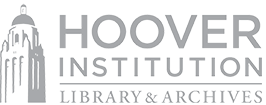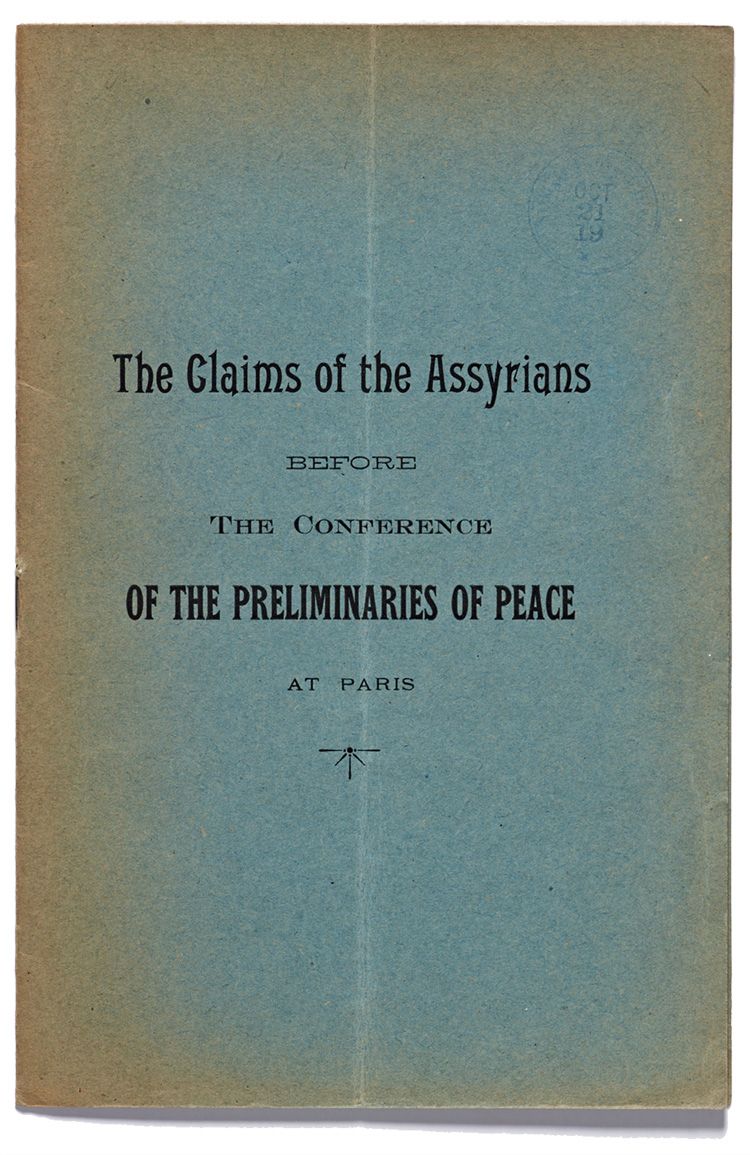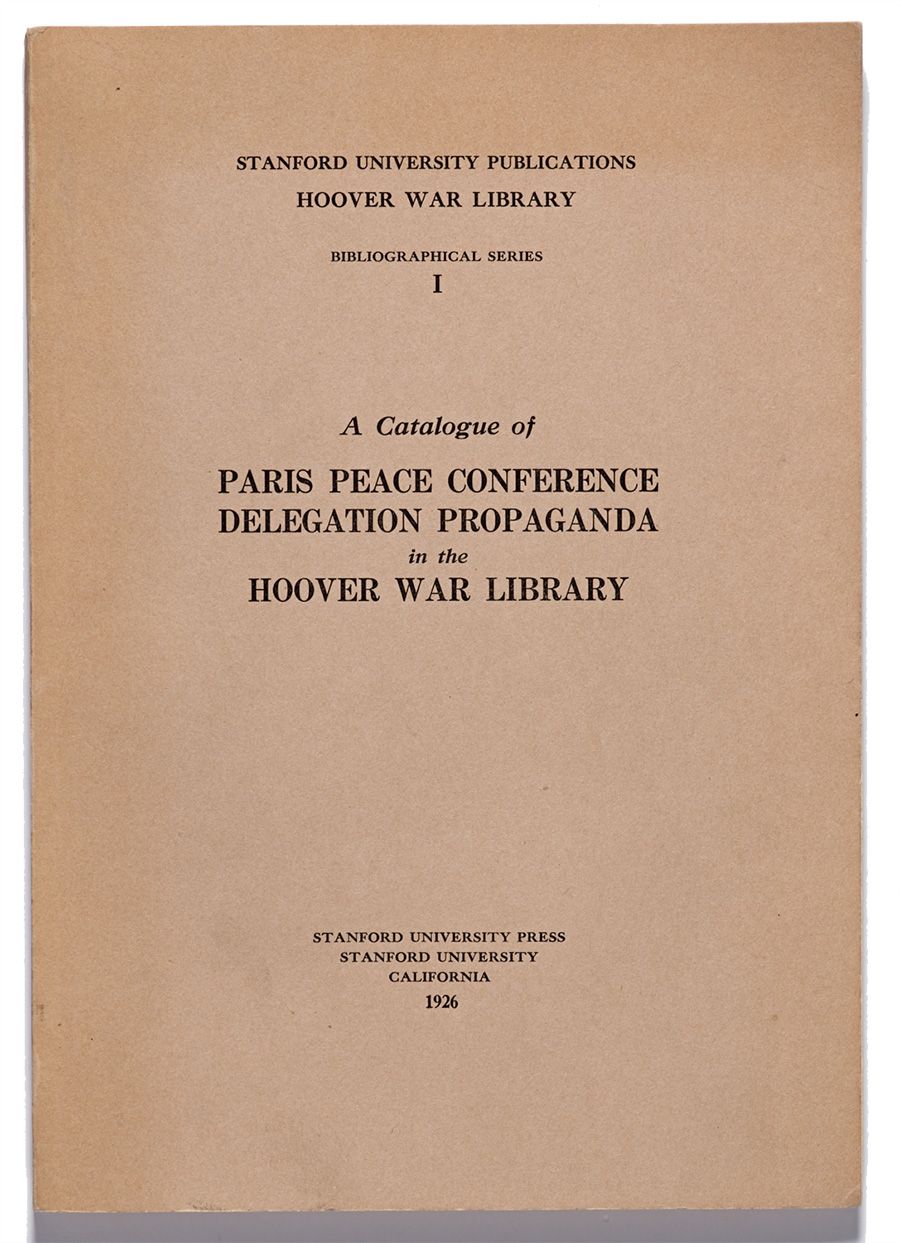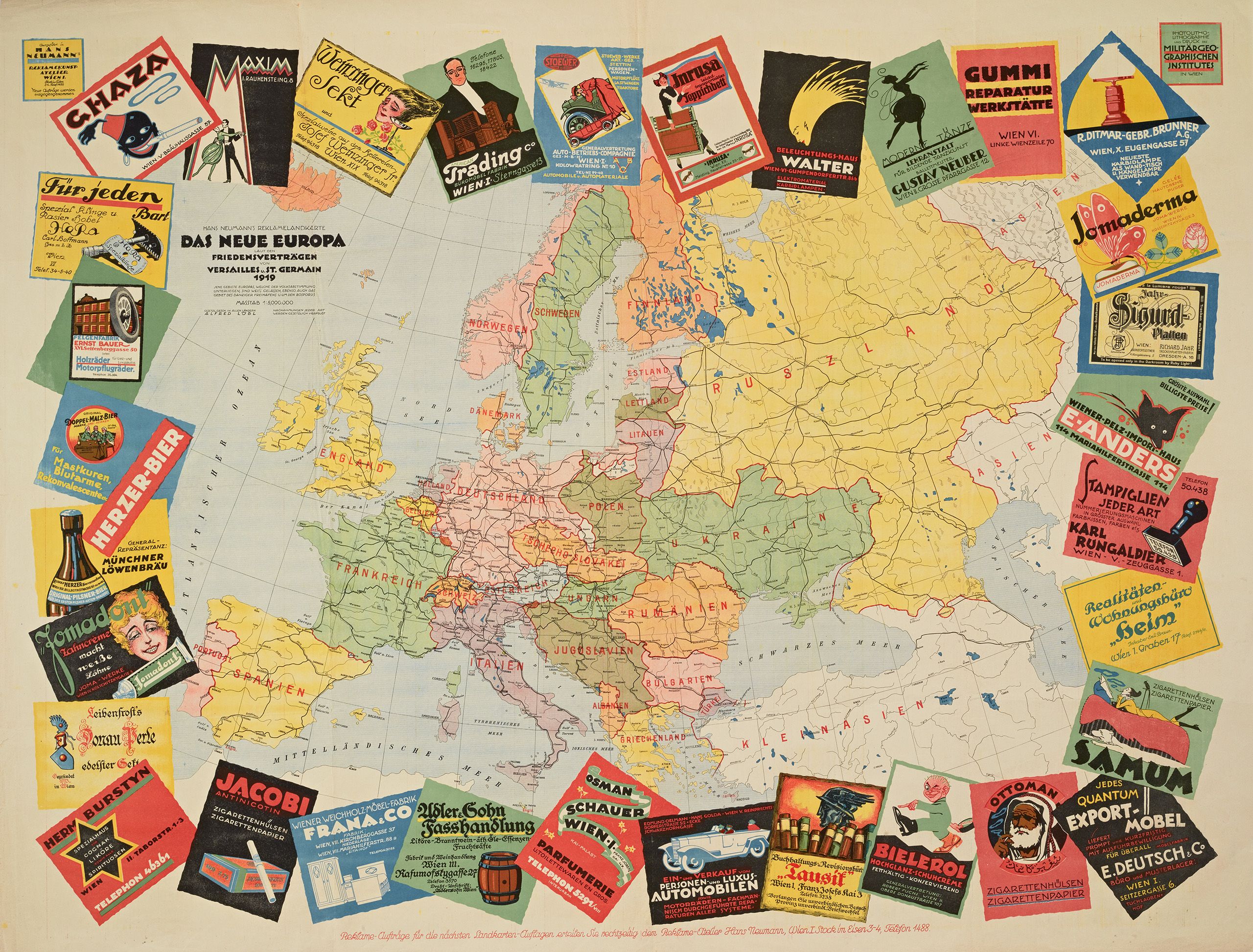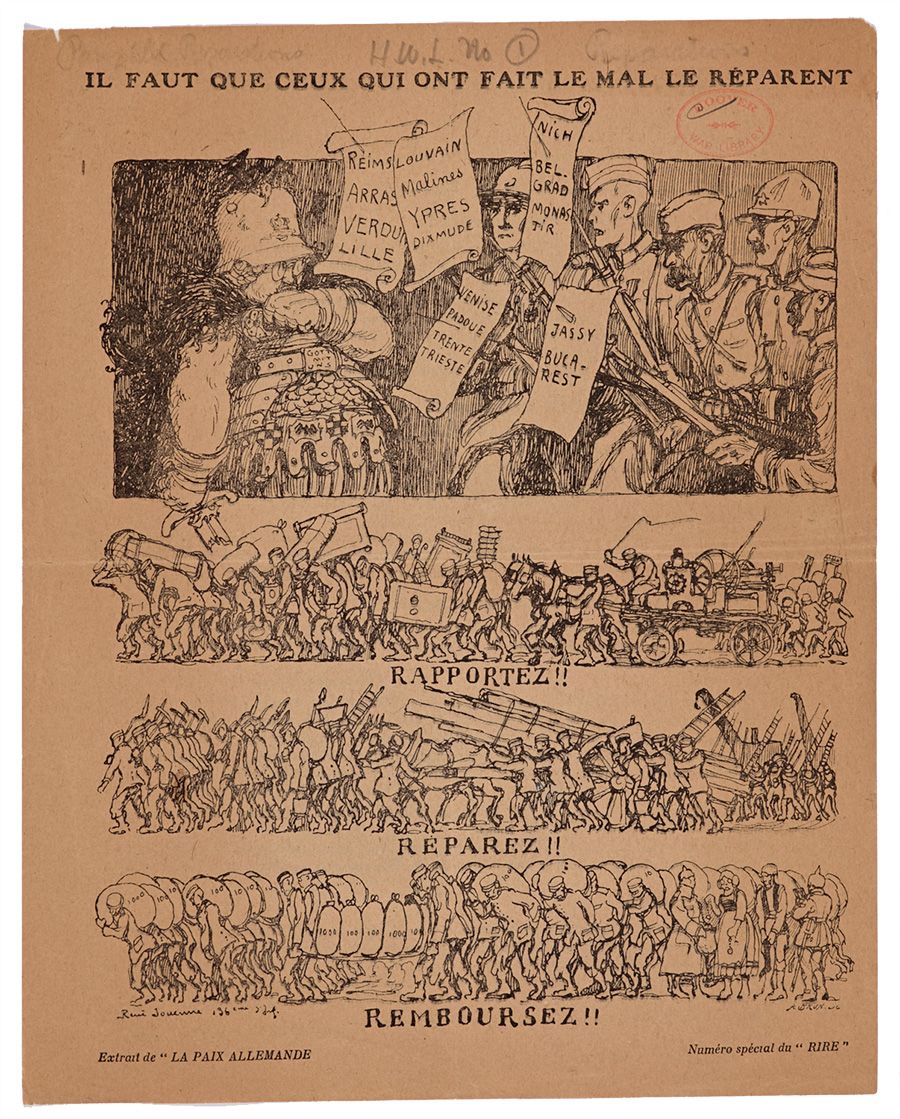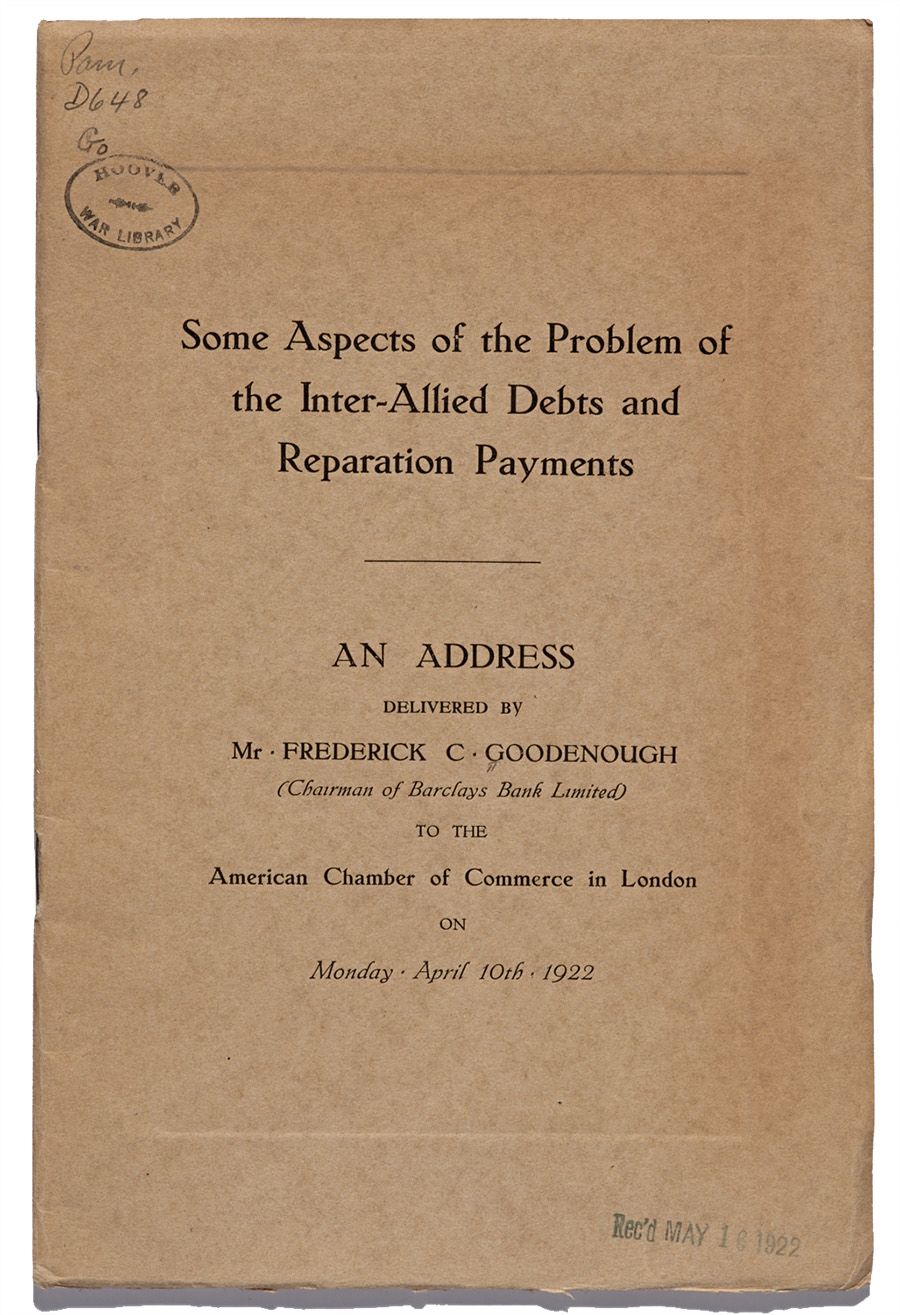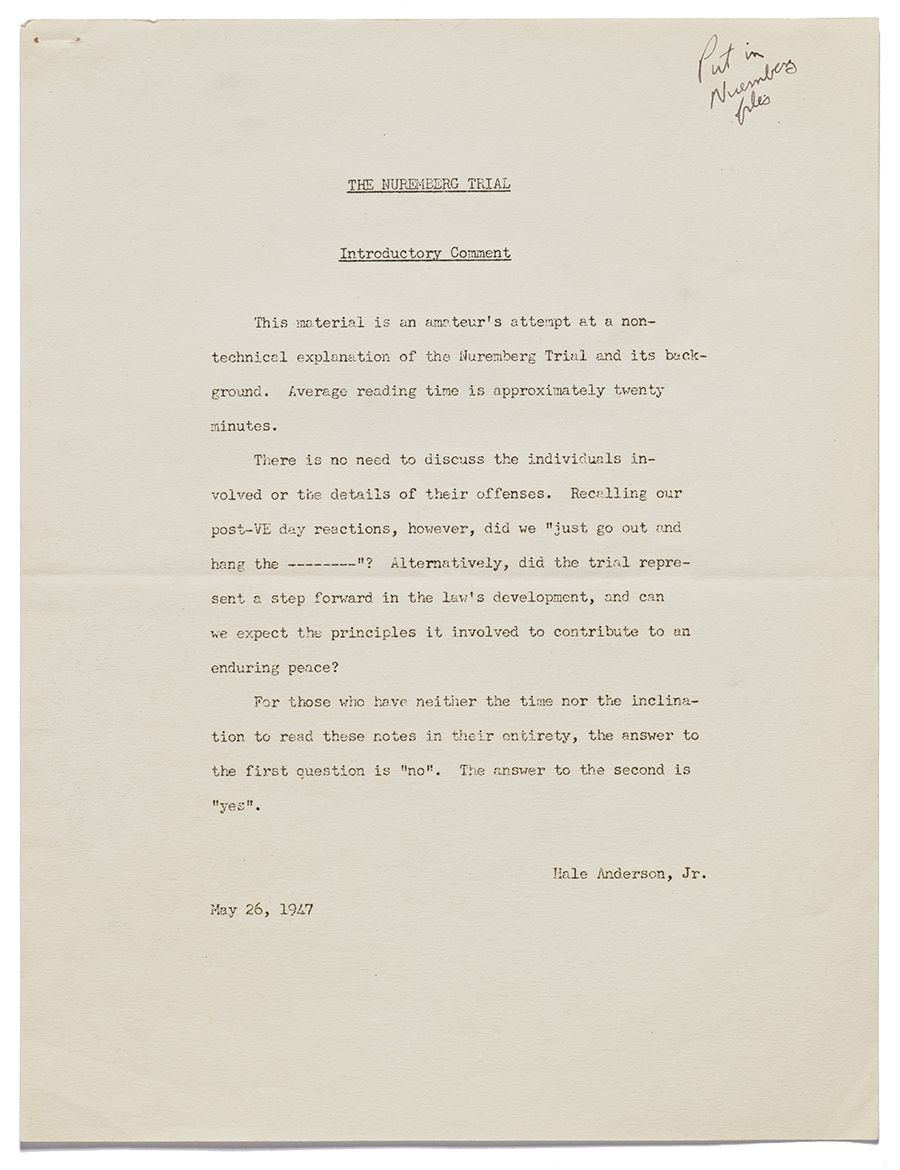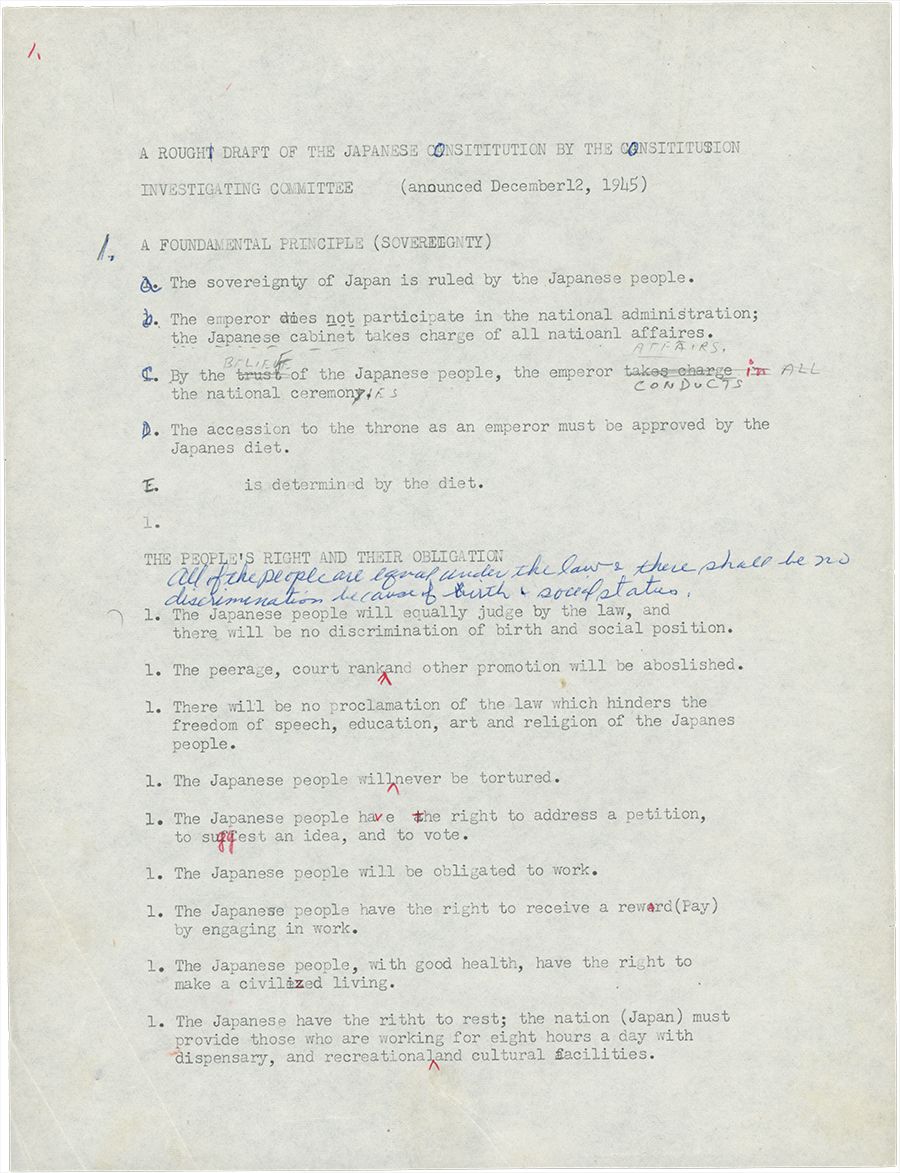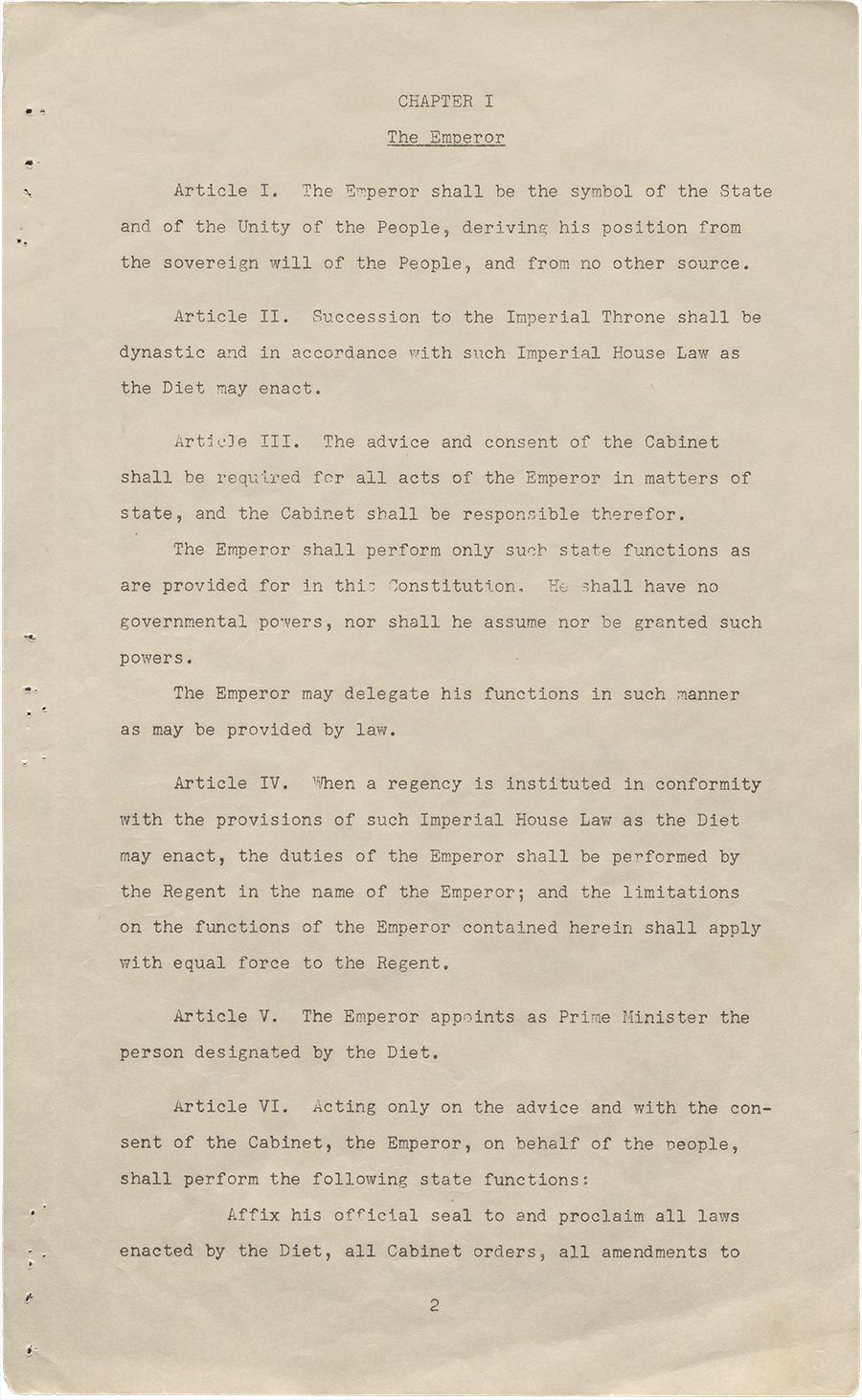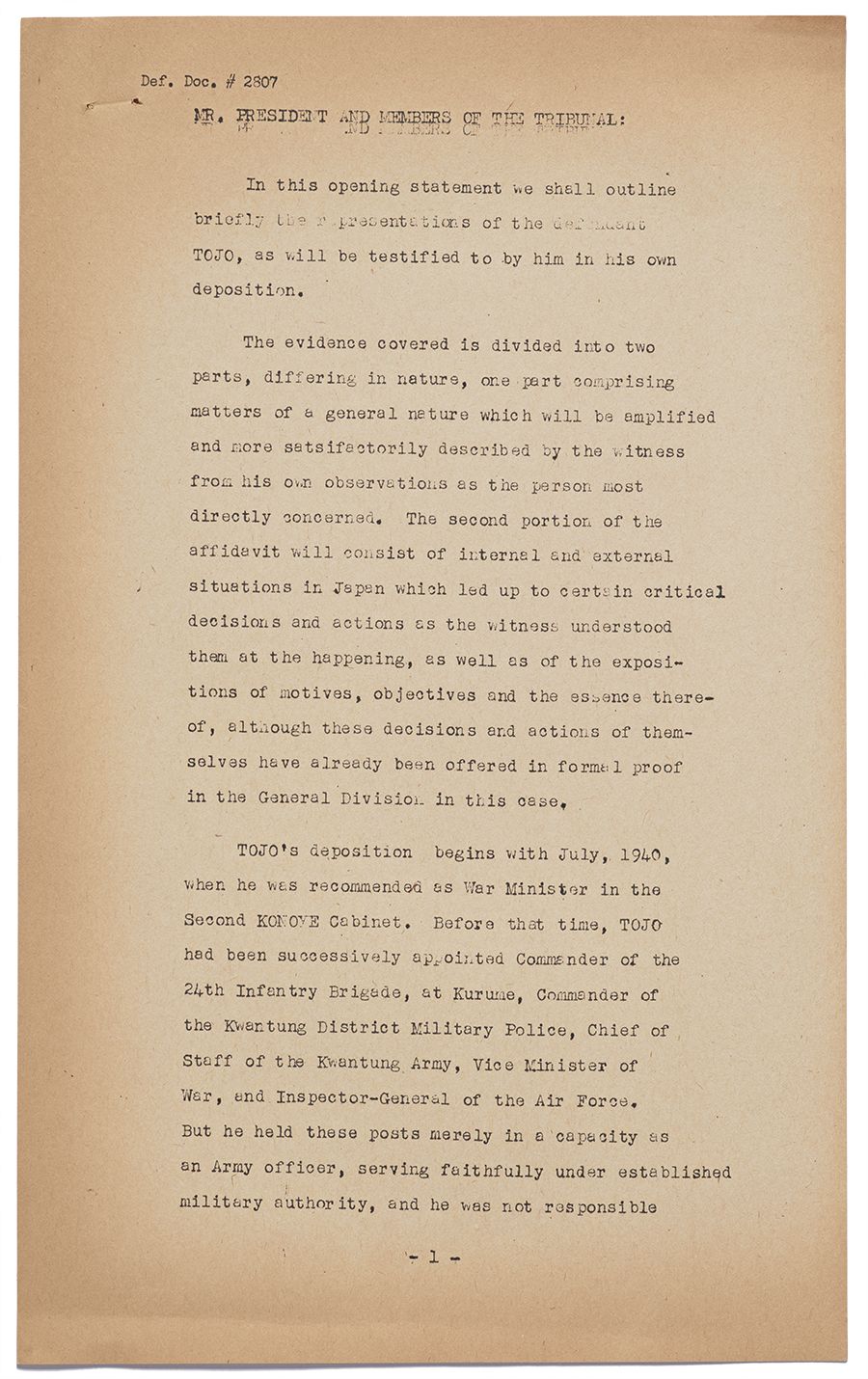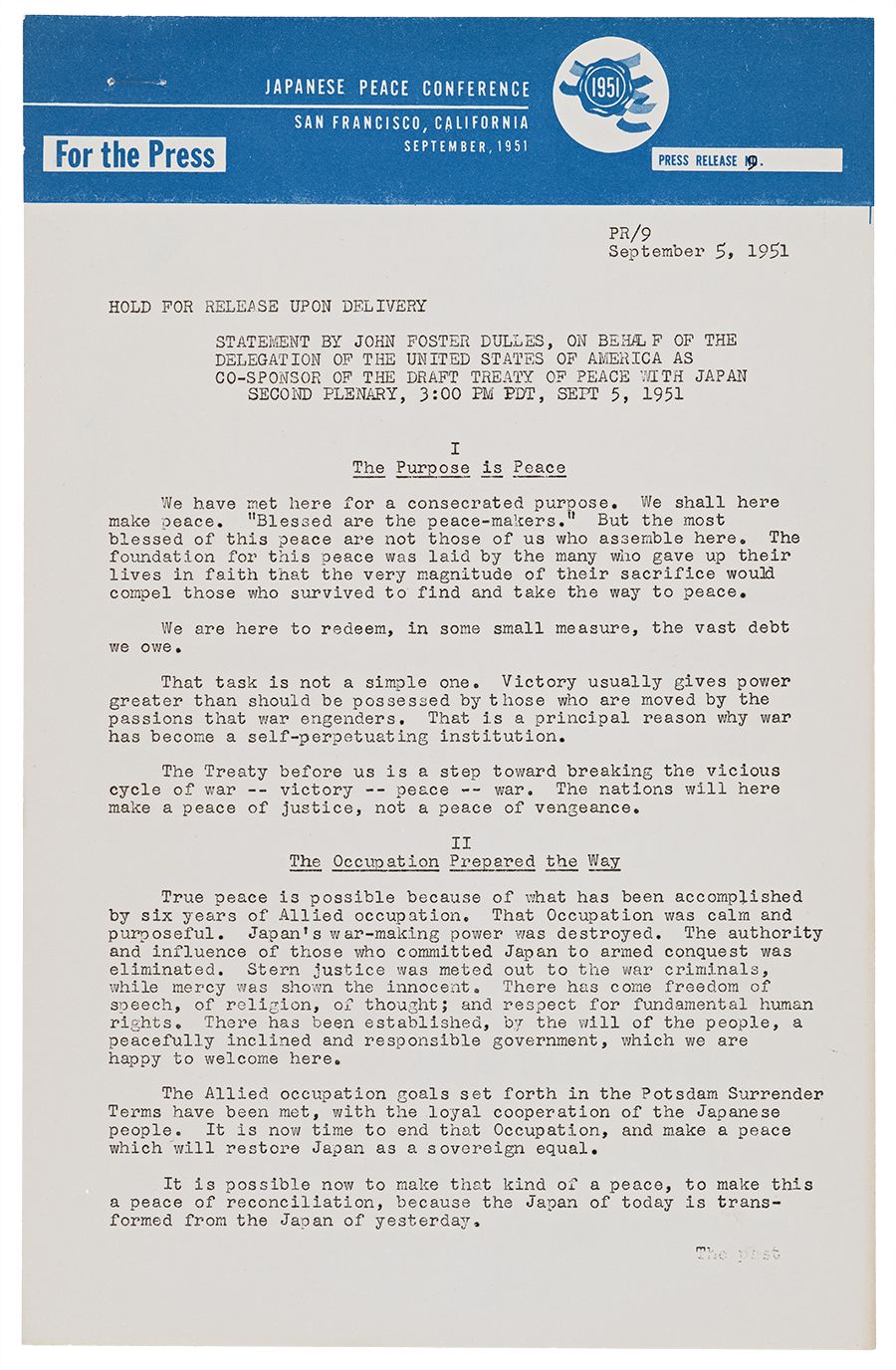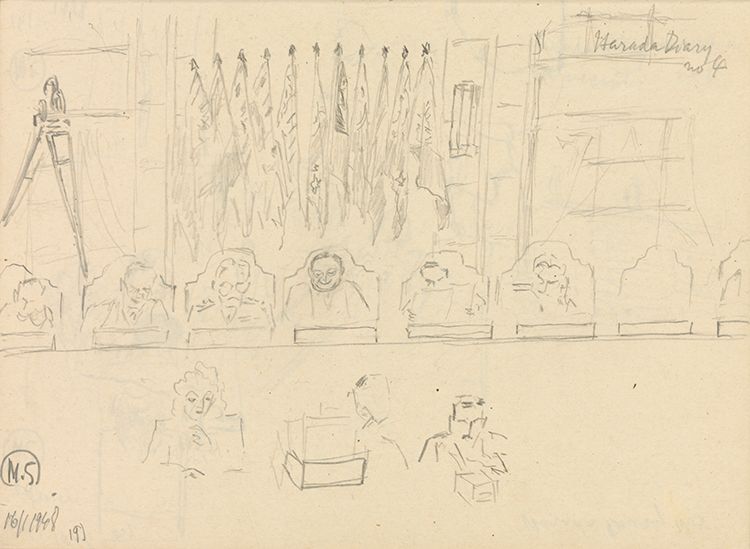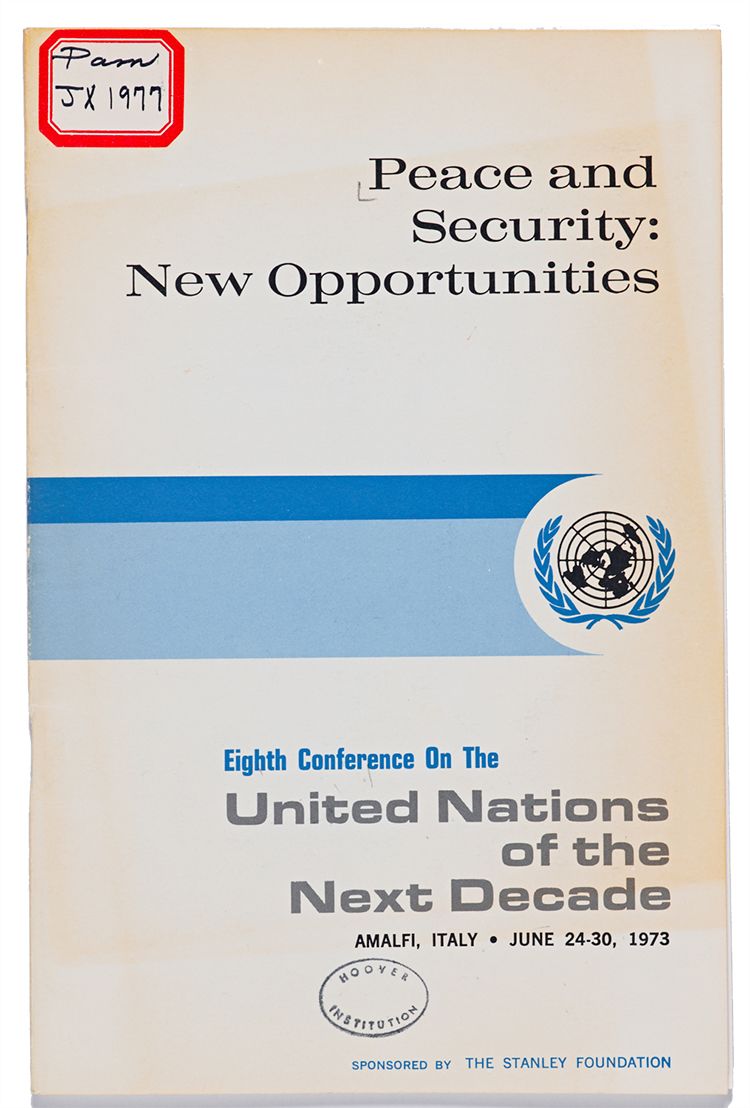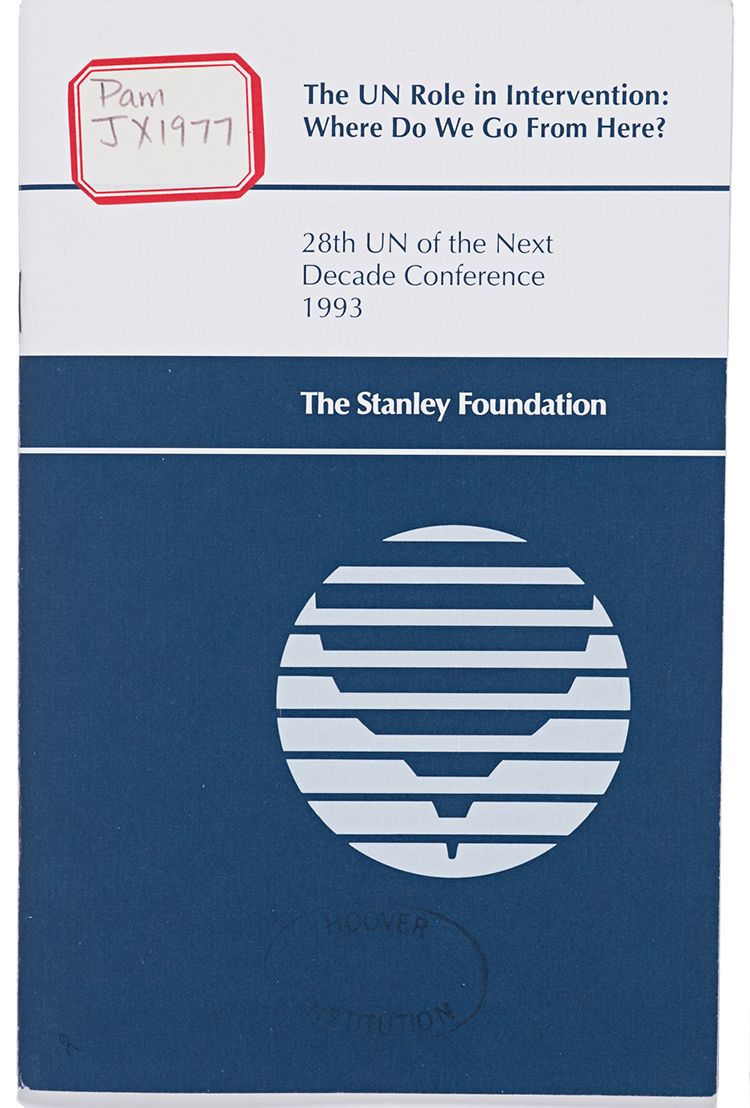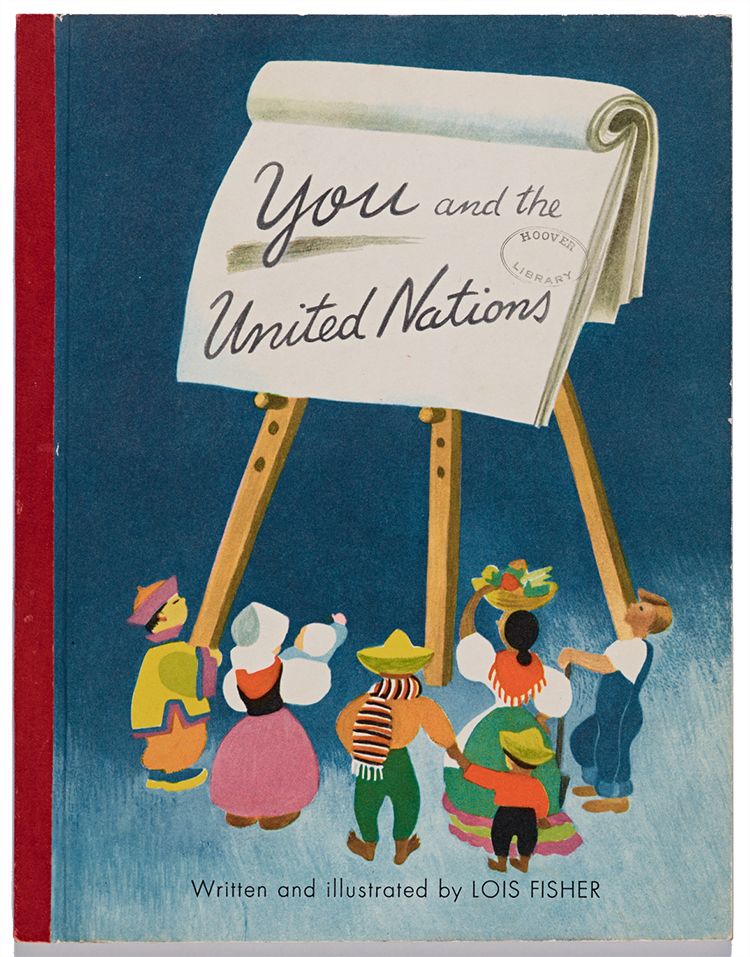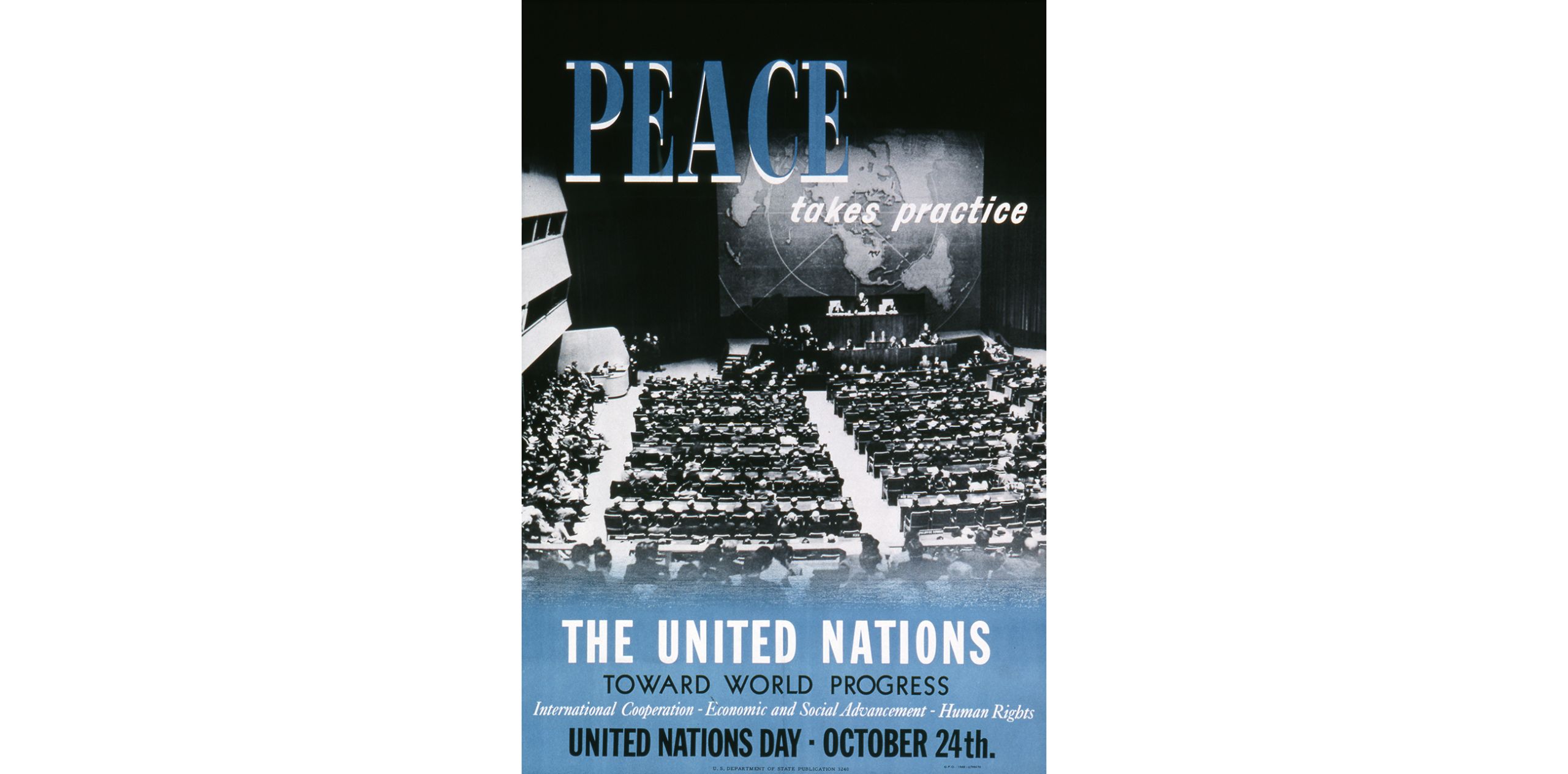Peacemaking in Practice
Recording the Aftermath of War
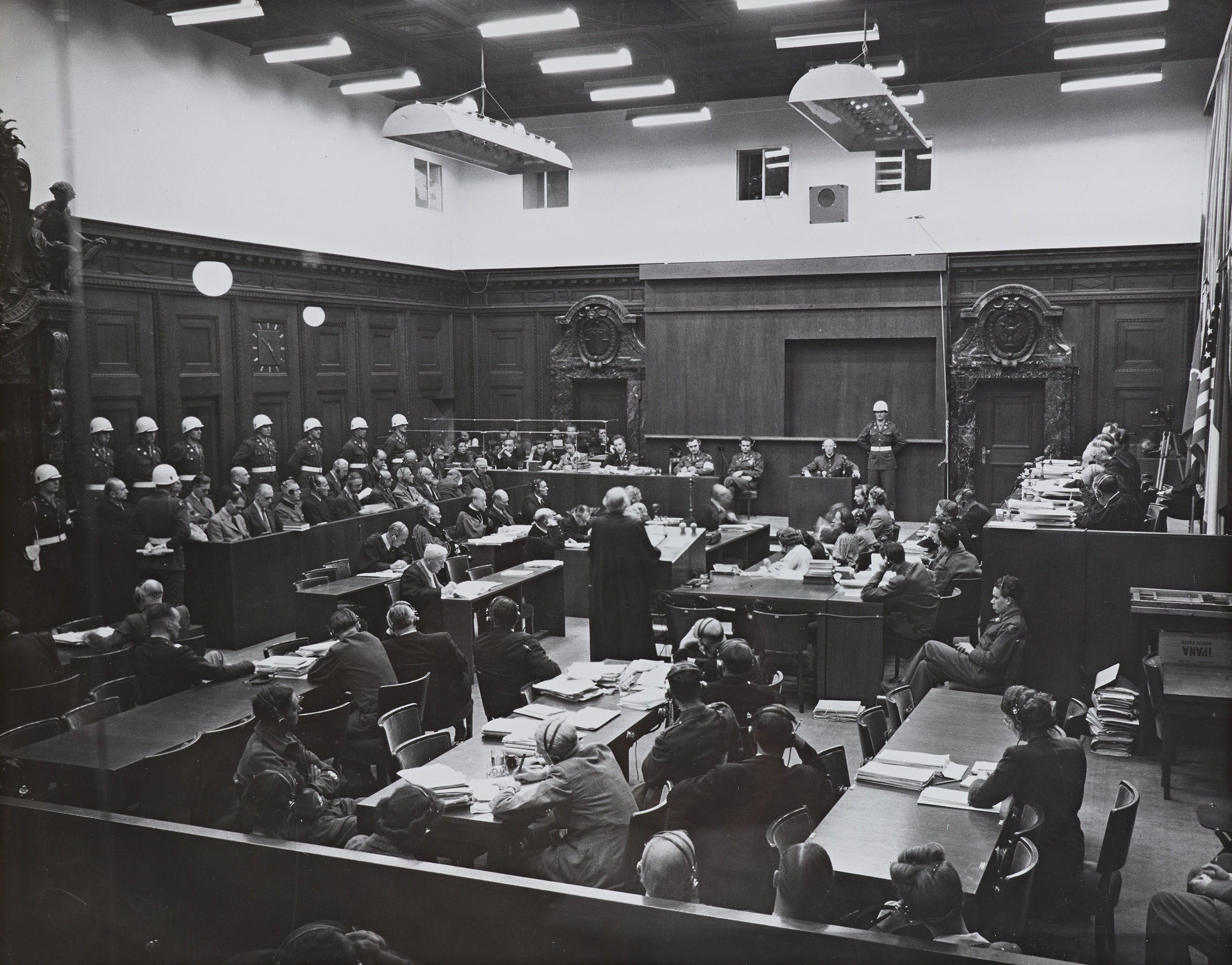
“There is no such thing today as isolation in the world. The hopes of the world lie in the prevention of war. There lie relief from poverty and the reduction of human toil.”
Herbert Hoover, “American Policies for Peace” radio address, January 15, 1938

Tasked with collecting records on war, revolution, and peace, the Stanford historians who served as the first curators of the Hoover War Collection, as it was originally known, prioritized securing documentation of peacemaking activities during and after World War I.
Among the founding collections of what later became the Hoover Institution Library & Archives were the so-called delegation propaganda from the Paris Peace Conference. These pamphlets document the efforts of peacemakers to fashion a new international order on the ruins of the old.
As the century progressed, new peace agreements continued to be drafted, and the Hoover collections continued to grow in order to foster the study of peacemaking in practice.
Paris Peace Conference

In 1919, after the close of the First World War, Herbert Hoover was serving as adviser to the United States delegation to the Paris Peace Conference. The objectives of the attendees were to negotiate peace terms for the defeated nations and to facilitate the establishment of political order, economic stability, and international cooperation in Europe and the Middle East in the wake of the collapse of the Russian, Austro-Hungarian, German, and Ottoman empires.
Seventy states and nations sent representatives to Paris encouraged by Woodrow Wilson’s call for “the self-determination of peoples.” Herbert Hoover was inundated by the publications of various groups vying for recognition. These materials would ultimately be brought together as the Paris Peace Delegation Propaganda Collection, the first library collection of the Hoover Institution.
A Catalogue of Paris Peace Conference Delegation Propaganda in the Hoover War Library, 1926. Stanford University Press
A Catalogue of Paris Peace Conference Delegation Propaganda in the Hoover War Library, 1926. Stanford University Press
The Claims of the Assyrians before the Conference of the Preliminaries of Peace at Paris, 1919. Hoover Institution Library
The Claims of the Assyrians before the Conference of the Preliminaries of Peace at Paris, 1919. Hoover Institution Library
Memorandum on the Claims of the Kurd People, March 22, 1919. Hoover Institution Library
Memorandum on the Claims of the Kurd People, March 22, 1919. Hoover Institution Library
Das Neue Europa laut den Friedensvertragen von Versailles und St. Germain (The New Europe according to the Treaty of Versailles and St. Germain), by Hans Neumann, 1919. Poster Collection, AU 281, Hoover Institution Archives
Das Neue Europa laut den Friedensvertragen von Versailles und St. Germain (The New Europe according to the Treaty of Versailles and St. Germain), by Hans Neumann, 1919. Poster Collection, AU 281, Hoover Institution Archives
The Consequences of the Paris Peace Conference
The Treaty of Versailles was signed during the Paris Peace Conference and required Germany to pay extensive reparations. In the years that followed, the German economy faltered and many Germans blamed the treaty and its financial burden.
The resulting resentment birthed the platform of the National Socialist (Nazi) Party, whose leadership by Adolf Hitler ultimately led to World War II. In the end, the Paris Peace Conference was not able to maintain world peace, but its records give researchers and policymakers insights into how peacemaking can be implemented in the future.
Il Faut Que Ceux Qui Ont Fait le Mal le Réparent (It Is Necessary That Those Who Have Done Evil Repair It), 1918. Hoover Institution Library
Il Faut Que Ceux Qui Ont Fait le Mal le Réparent (It Is Necessary That Those Who Have Done Evil Repair It), 1918. Hoover Institution Library
Some Aspects of the Problem of the Inter-Allied Debts and Reparation Payments, by Frederick C. Goodenough, April 10, 1922. Hoover Institution Library
Some Aspects of the Problem of the Inter-Allied Debts and Reparation Payments, by Frederick C. Goodenough, April 10, 1922. Hoover Institution Library
Versailles, Zug um Zug zerrissen! (Versailles, torn up step by step!), 1938. Poster Collection, GE 989, Hoover Institution Archives. This poster was used during the German election of Adolf Hitler.
Versailles, Zug um Zug zerrissen! (Versailles, torn up step by step!), 1938. Poster Collection, GE 989, Hoover Institution Archives. This poster was used during the German election of Adolf Hitler.
Nuremberg Trials

Between 1945 and 1946, German officials who had been implicated in the Holocaust and other criminal activities were brought before an international tribunal in the Nuremberg Trials. Nuremberg was chosen as the site for the trials in part because the city had been the location of the Nazi Party’s annual rallies, and also because anti-Semitic laws had been passed there in 1935.
The first and best known of the Nuremberg trials was the Trial of the Major War Criminals before the International Military Tribunal, held from November 1945 to October 1946. It passed judgment on two dozen of the most important captured leaders of Nazi Germany for war crimes, crimes against peace, and crimes against humanity. Twelve of the accused were sentenced to death.
Proposals for Denazification, 1947. William Russell Philp Collection, Hoover Institution Archives
Proposals for Denazification, 1947. William Russell Philp Collection, Hoover Institution Archives
The Nuremberg Trial, Introductory Comment, by Hale Anderson Jr., May 26, 1947. James B. Donovan Papers, Hoover Institution Archives
The Nuremberg Trial, Introductory Comment, by Hale Anderson Jr., May 26, 1947. James B. Donovan Papers, Hoover Institution Archives




Post-War Japan
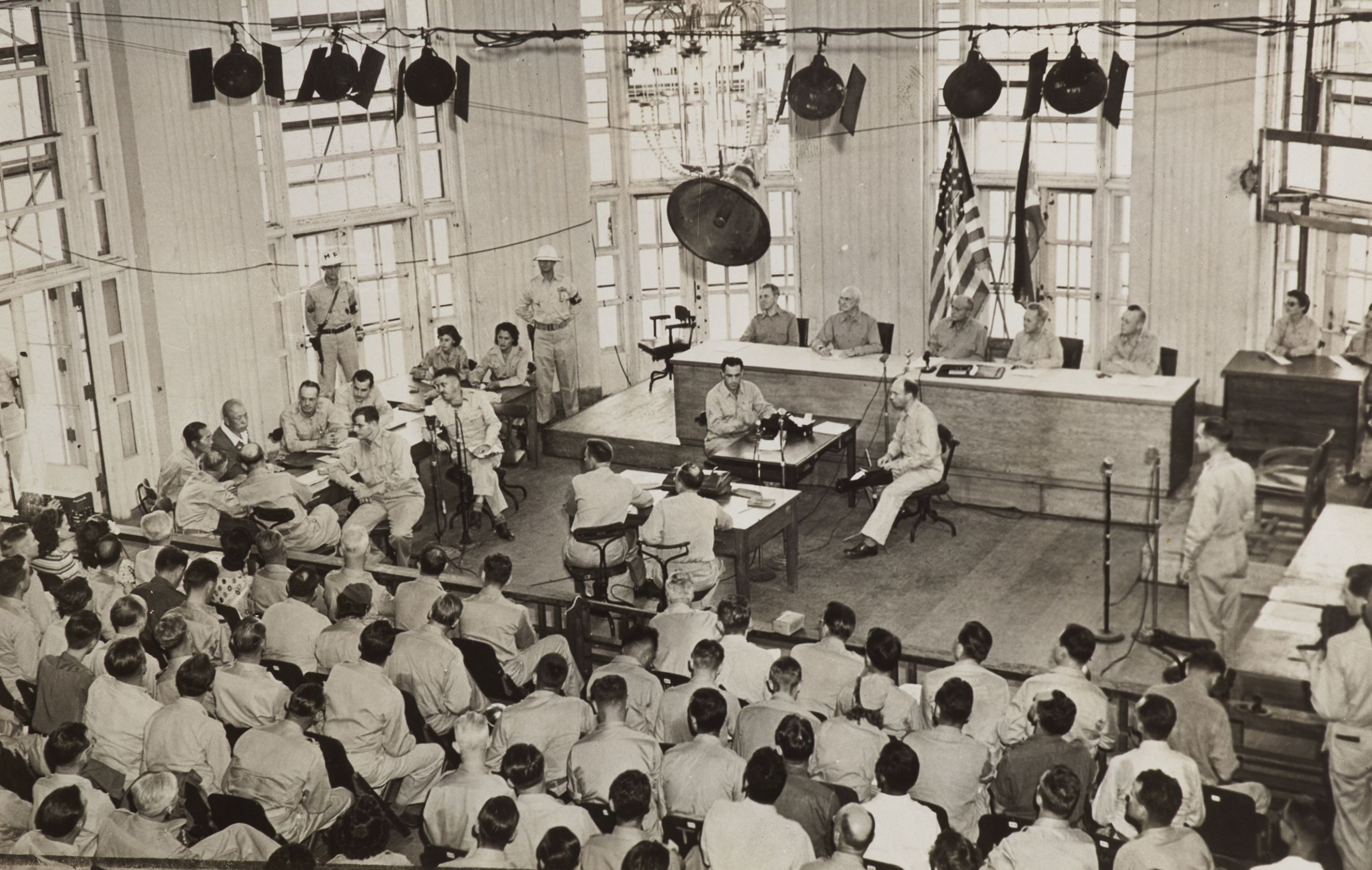
From 1945 to 1953 the Allied powers, led by General Douglas MacArthur, occupied and rehabilitated Japan after its defeat in World War II. The occupation brought sweeping changes to Japan, including the introduction of political, economic, social, and military reforms. The new Japanese constitution was drafted under the close supervision of the Allied leaders, with some rough drafts being composed and edited in English.
A rough draft of the Japanese Constitution by the Constitution Investigating Committee, December 12, 1945. Milo E. Rowell Papers, Hoover Institution Archives
A rough draft of the Japanese Constitution by the Constitution Investigating Committee, December 12, 1945. Milo E. Rowell Papers, Hoover Institution Archives
One of the most contentious issues was the treatment of the Japanese emperor and his future role as leader of the nation. The figure of the emperor had been deified and universally revered by the Japanese people during the period of empire, and Emperor Hirohito was no different.
Original draft of the proposed Constitution of Japan, 1946. Milo E. Rowell Papers, Hoover Institution Archives
Original draft of the proposed Constitution of Japan, 1946. Milo E. Rowell Papers, Hoover Institution Archives
This reverence made his complete removal and prosecution for war crimes strategically undesirable from the point of view of Allied officials, who understood that the support of the Japanese people was essential to a successful postwar transition. Hirohito was spared a trial and a prison sentence, but the Japanese constitution was rewritten so that the emperor’s status was reduced to that of a ceremonial figurehead.
Opening Statement, Hideki Tojo, Individual Defense, December 26, 1947. Japanese Modern History Manuscript Collection, Hoover Institution Archives
Opening Statement, Hideki Tojo, Individual Defense, December 26, 1947. Japanese Modern History Manuscript Collection, Hoover Institution Archives
Statement by John Foster Dulles, on behalf of the Delegation of the United States of America as co-sponsor of the Draft Treaty of Peace with Japan, September 5, 1951. Conference for Conclusion and Signature of Treaty of Peace with Japan (1951: San Francisco) Records, Hoover Institution Archives
Statement by John Foster Dulles, on behalf of the Delegation of the United States of America as co-sponsor of the Draft Treaty of Peace with Japan, September 5, 1951. Conference for Conclusion and Signature of Treaty of Peace with Japan (1951: San Francisco) Records, Hoover Institution Archives
Shigemitsu Mamoru Sketches
Commonly known as the Tokyo trials, the International Military Tribunal for the Far East tried Japanese political and military leaders on charges of crimes against peace, war crimes, and crimes against humanity. The Tokyo trials lasted two and a half years. All the surviving defendants charged with crimes against peace were found guilty. Among them was the minister of foreign affairs, Shigemitsu Mamoru, who signed Japan’s instrument of surrender aboard the USS Missouri. During the trial, Shigemitsu documented court scenes by making sketches and taking notes, which provide a unique insider’s view of the trial.
Overview of the Judges, by Shigemitsu Mamoru, circa 1947–1948. Shigemitsu Mamoru Sketch Books, Hoover Institution Archives
Overview of the Judges, by Shigemitsu Mamoru, circa 1947–1948. Shigemitsu Mamoru Sketch Books, Hoover Institution Archives
United Nations
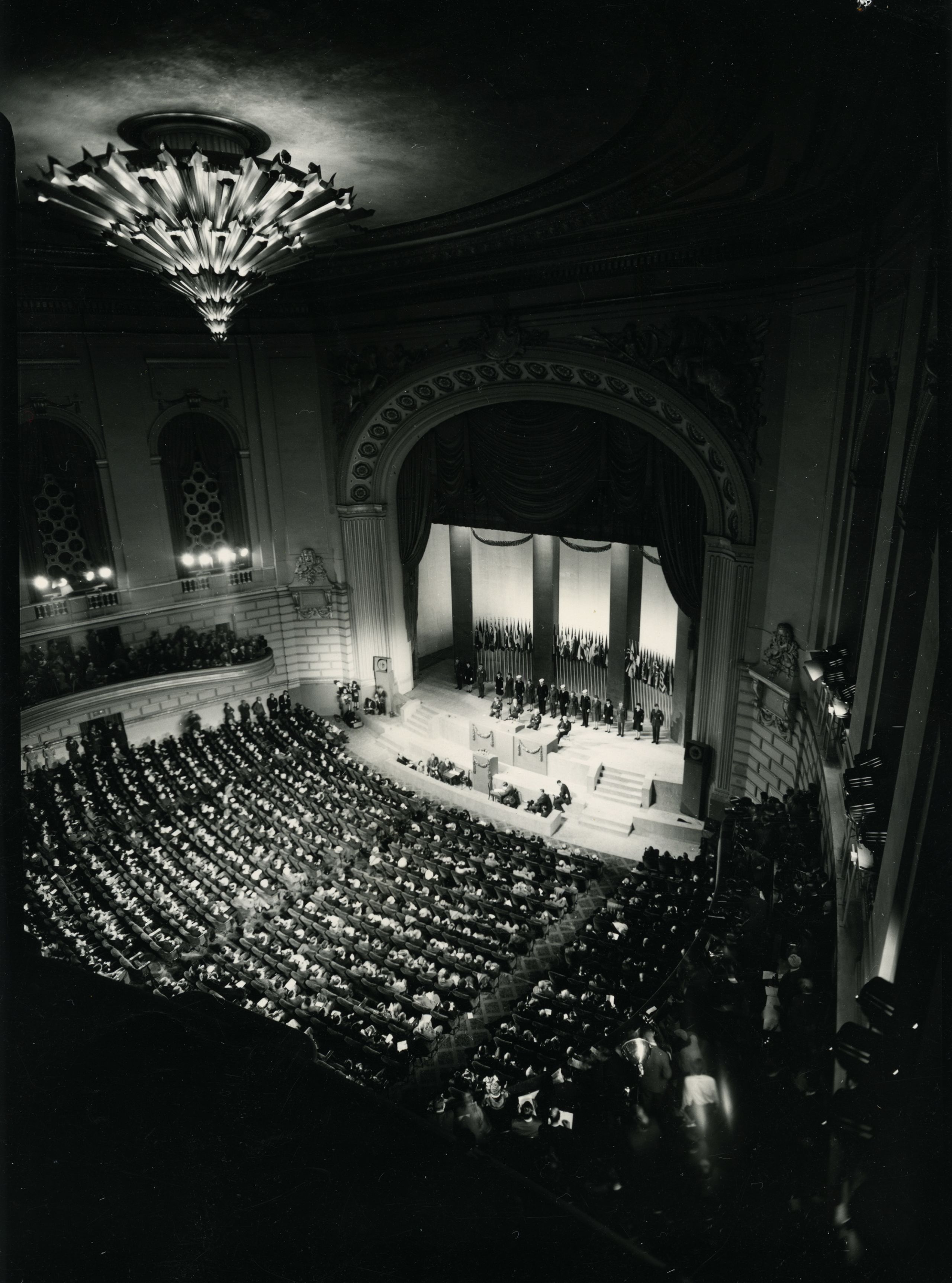
Peace and Security: New Opportunities, published by The Stanley Foundation, June, 1973. Hoover Institution Library
Peace and Security: New Opportunities, published by The Stanley Foundation, June, 1973. Hoover Institution Library
The UN Role in Intervention: Where Do We Go From Here?, published by The Stanley Foundation, 1993. Hoover Institution Library
The UN Role in Intervention: Where Do We Go From Here?, published by The Stanley Foundation, 1993. Hoover Institution Library
The United Nations (UN) Conference on International Organization took place from April 25 to June 26, 1945, in San Francisco. Fifty countries gathered at the conference, whose purpose was to draft the text of the United Nations Charter. The executive secretary of the conference was C. Easton Rothwell, who served as director of the Hoover Institution from 1952 to 1959.
Anthony Eden reacts to news of the German surrender, 1945. United Nations Conference on International Organization Proceedings, Hoover Institution Archives
Anthony Eden reacts to news of the German surrender, 1945. United Nations Conference on International Organization Proceedings, Hoover Institution Archives
After the Charter had been ratified by a majority of signatory states, the UN came into existence on October 24, 1945. The Hoover Institution Archives holds a collection on the UN’s founding conference that includes sound recordings of conference proceedings made by the National Broadcasting Company (NBC) and photographs and contact sheets depicting delegates and scenes at the conference.
You and the United Nations, by Lois Fisher, published by Children's Press, Inc., 1947. Hoover Institution Library. This children's book was a gift of Herbert Hoover.
You and the United Nations, by Lois Fisher, published by Children's Press, Inc., 1947. Hoover Institution Library. This children's book was a gift of Herbert Hoover.
Peace Takes Practice, issued by the U.S. Government Printing Office, 1948. Poster Collection, INT 34, Hoover Institution Archives
Peace Takes Practice, issued by the U.S. Government Printing Office, 1948. Poster Collection, INT 34, Hoover Institution Archives
The Hoover Institution Library & Archives wishes to receive notifications of alleged copyright infringement on this website. If you are a rights holder and believe that our inclusion of certain material on this website violates your rights, please contact: https://www.hoover.org/library-archives/collections/get-help/rights-and-permissions
© 2022 by the Board of Trustees of Leland Stanford Junior University.
